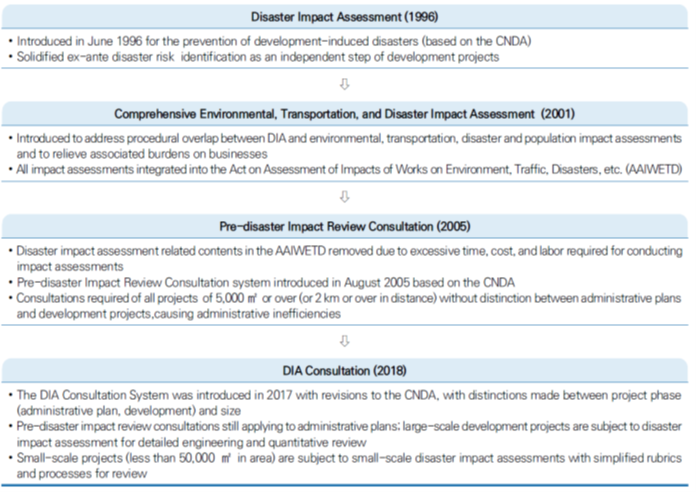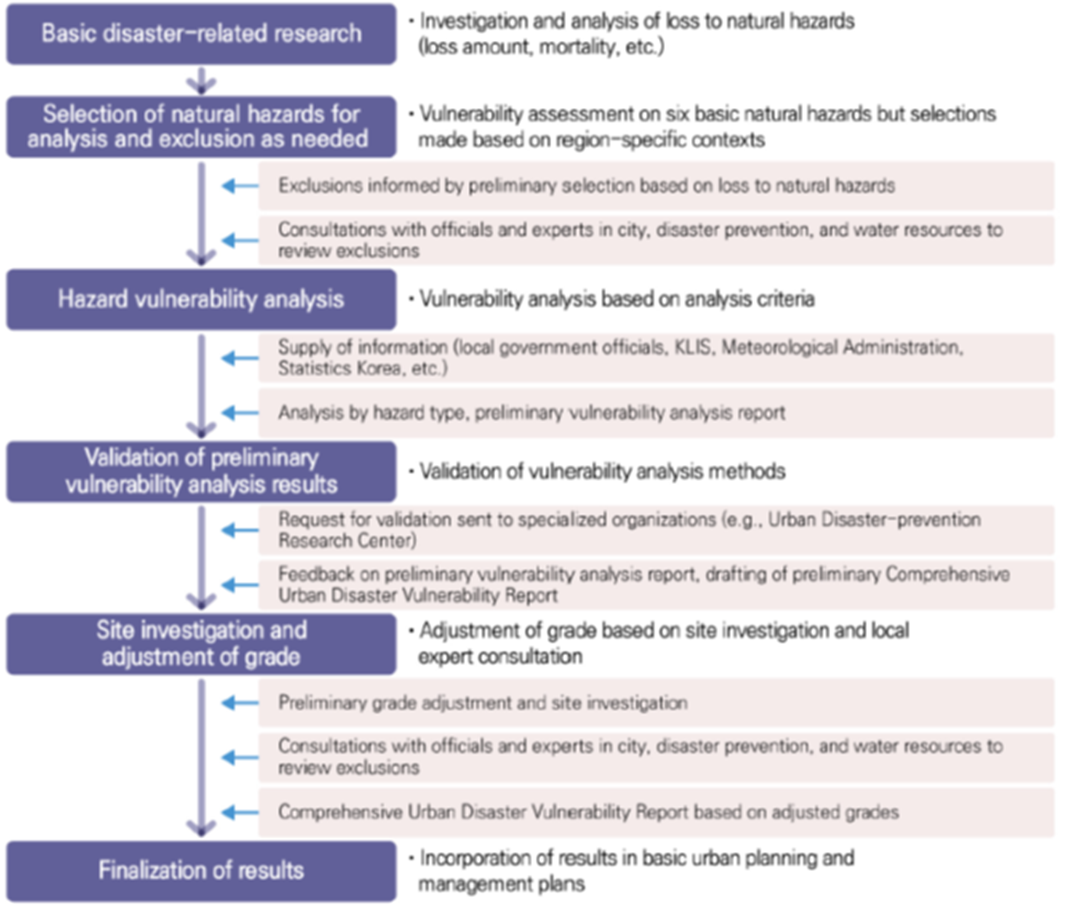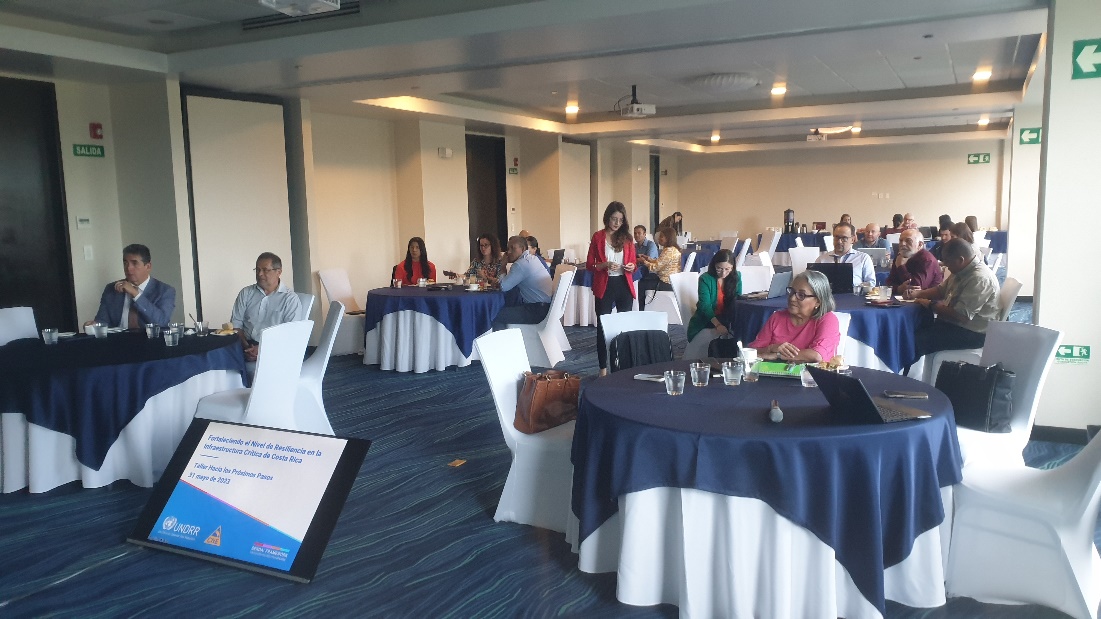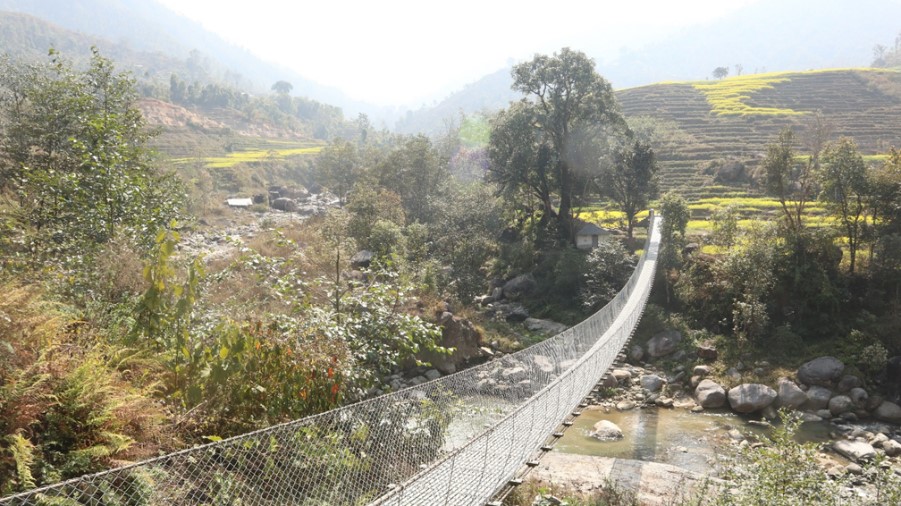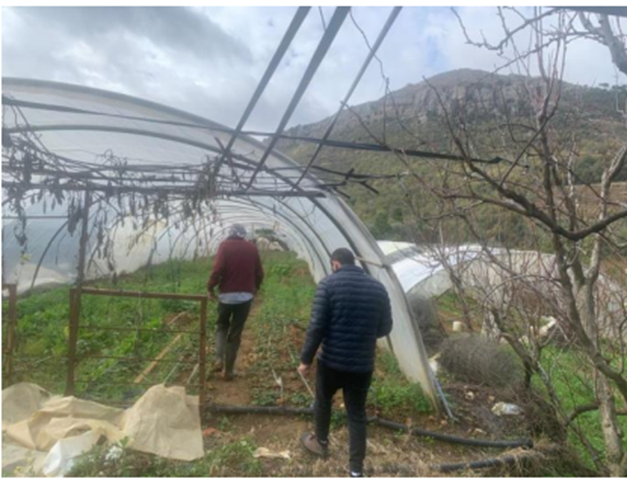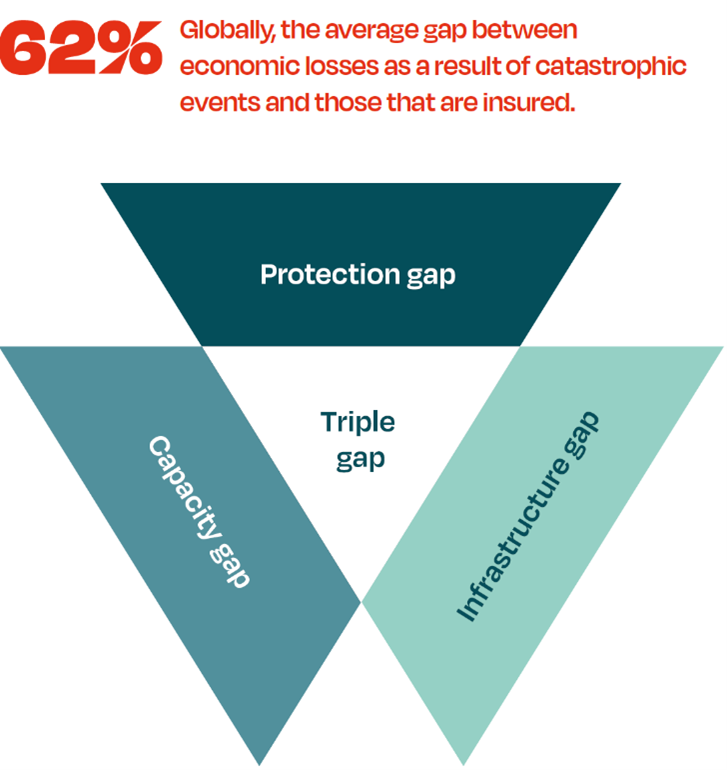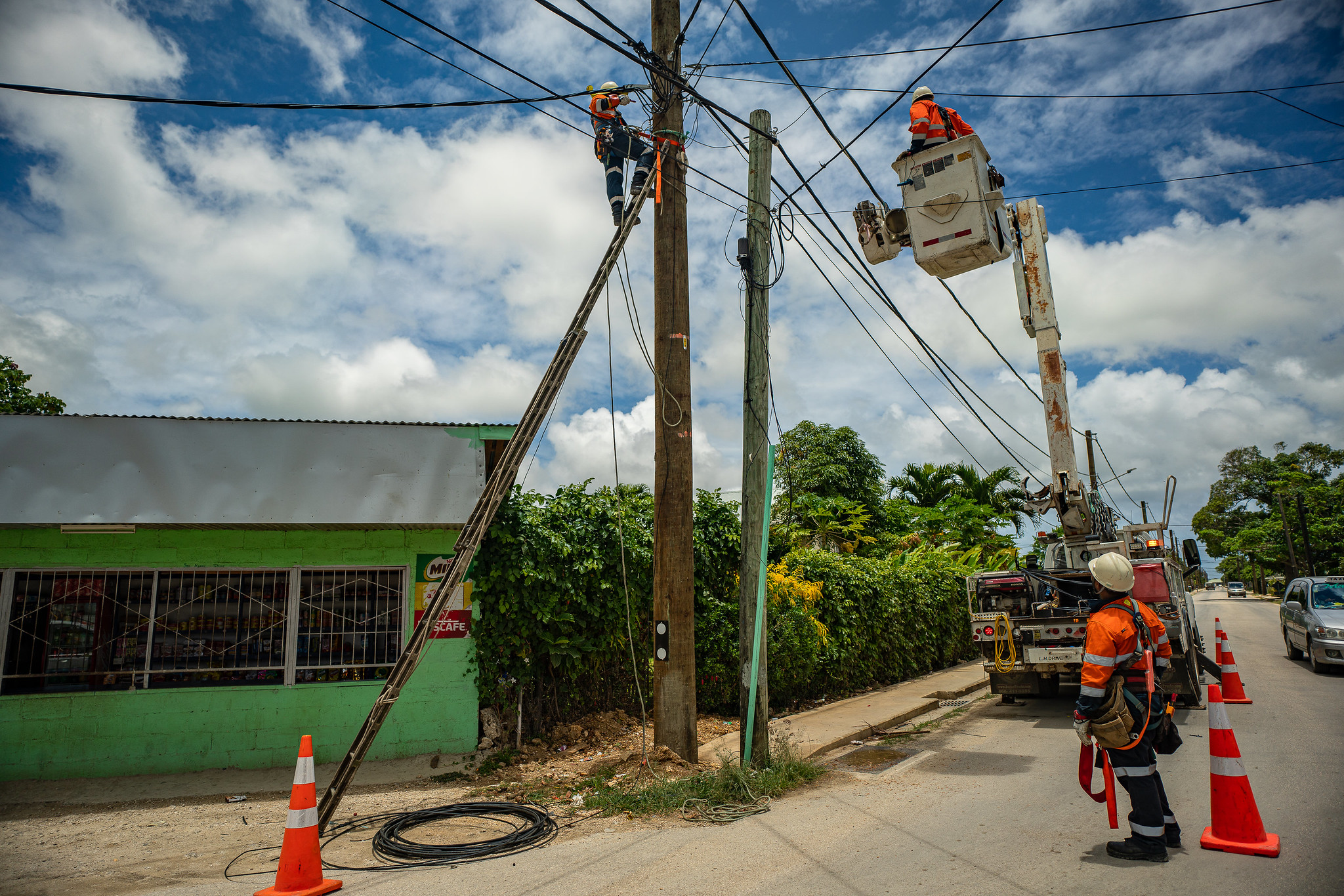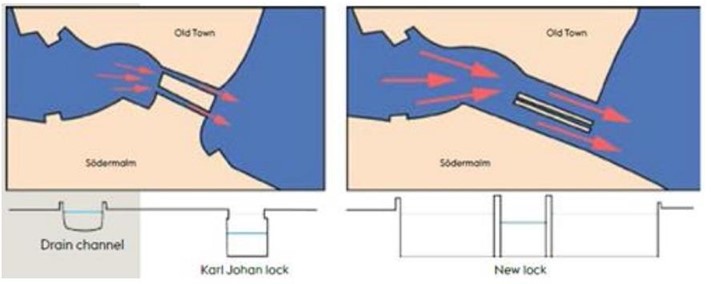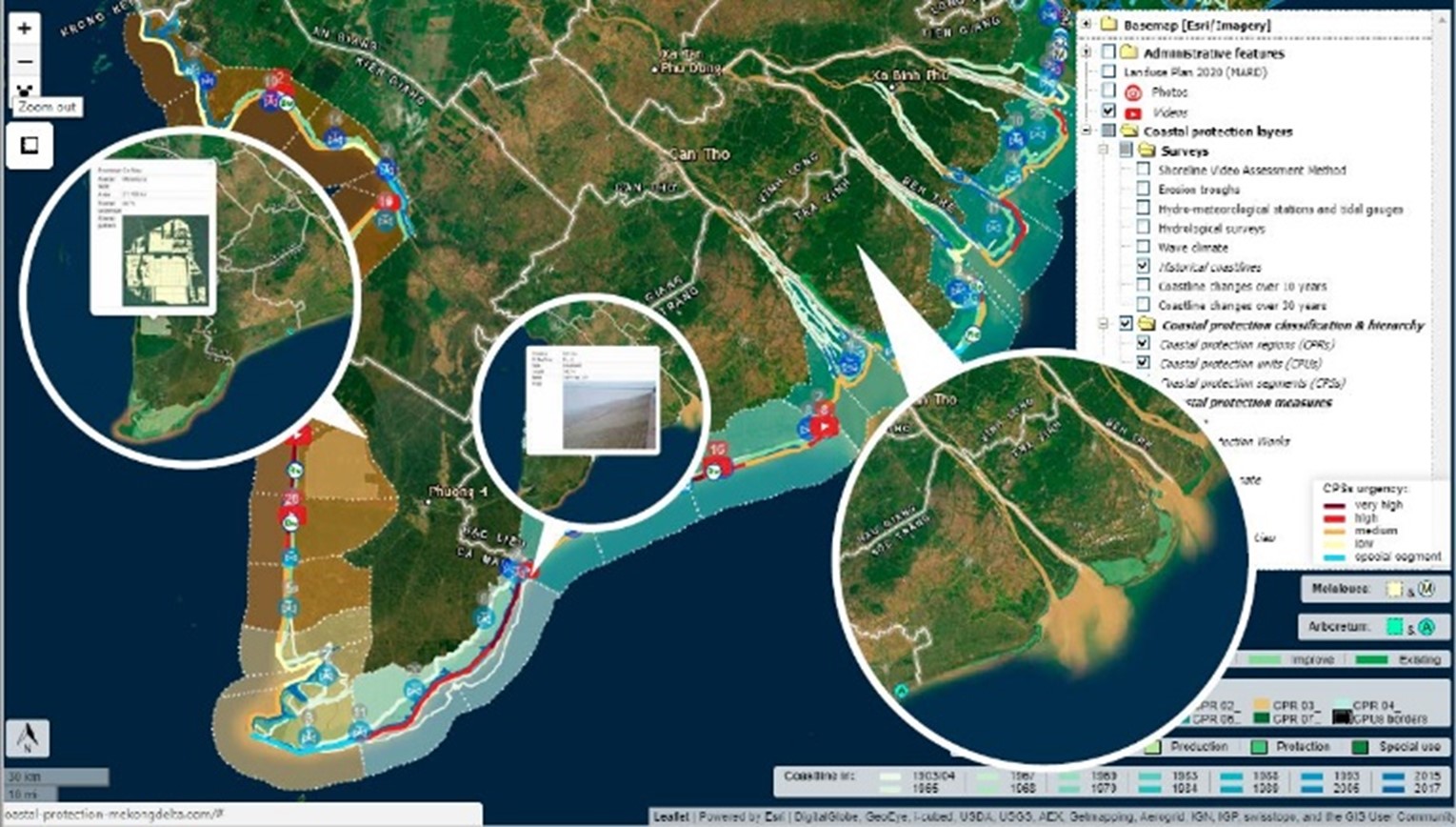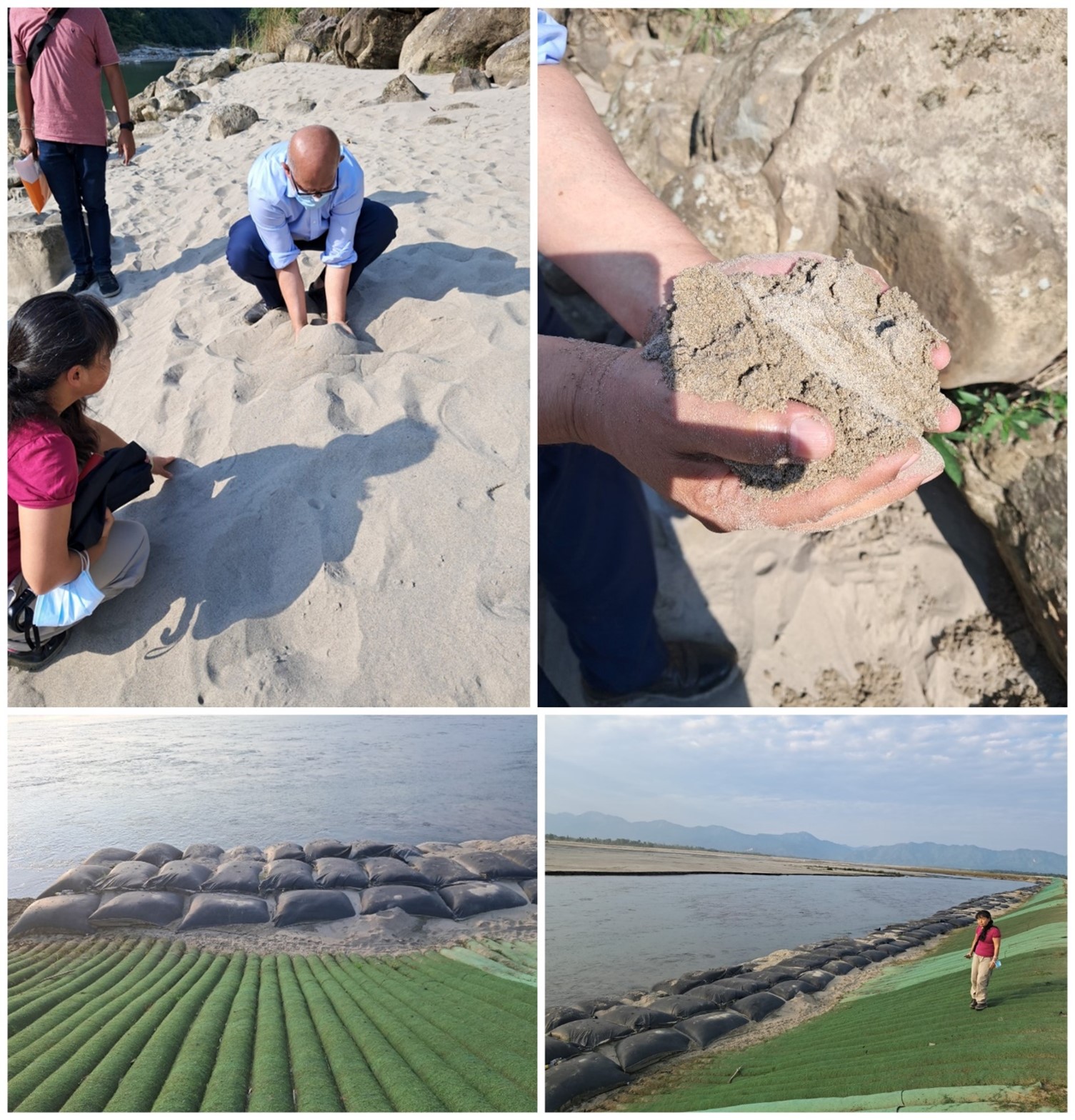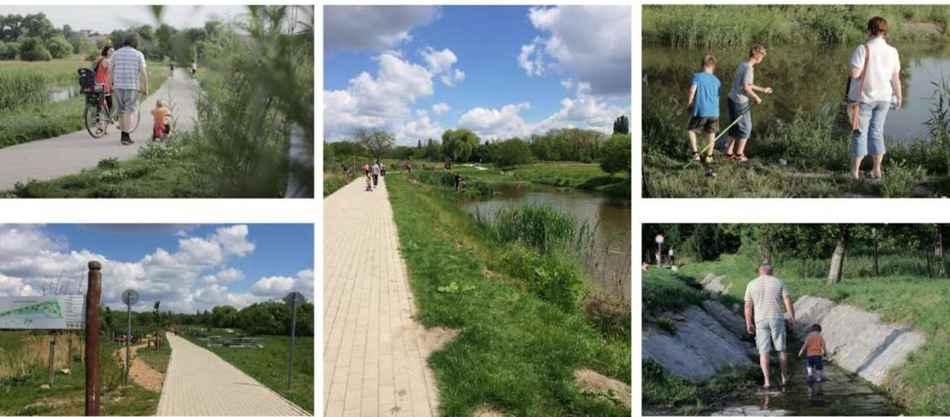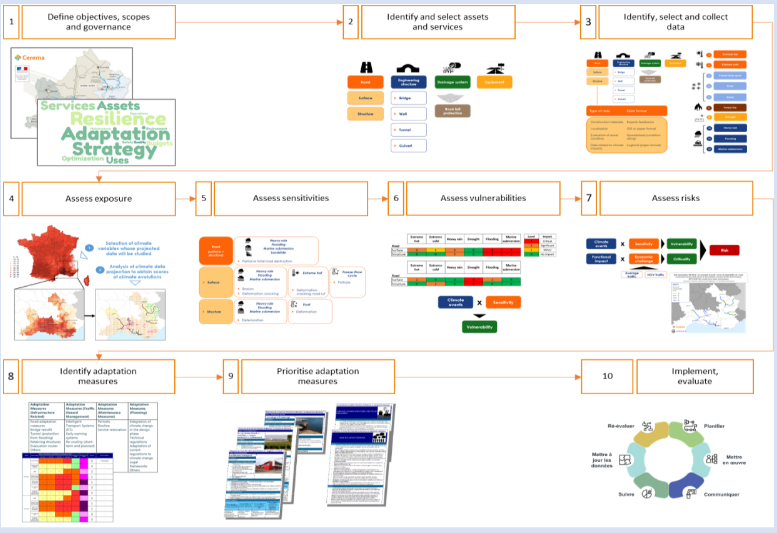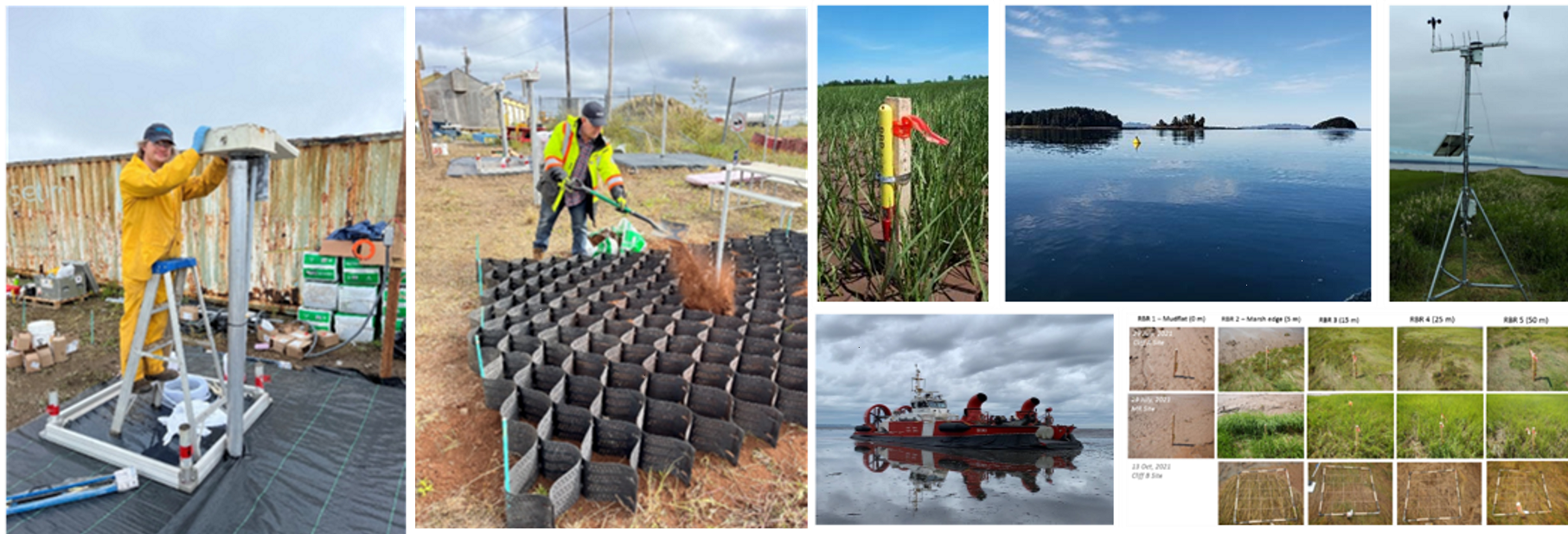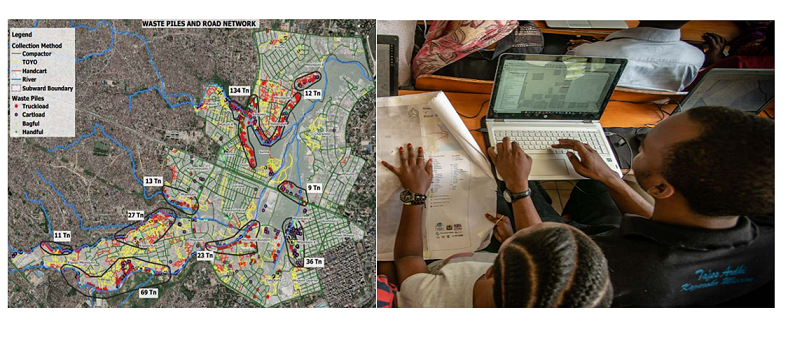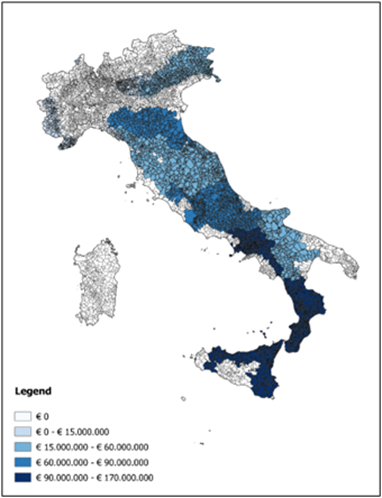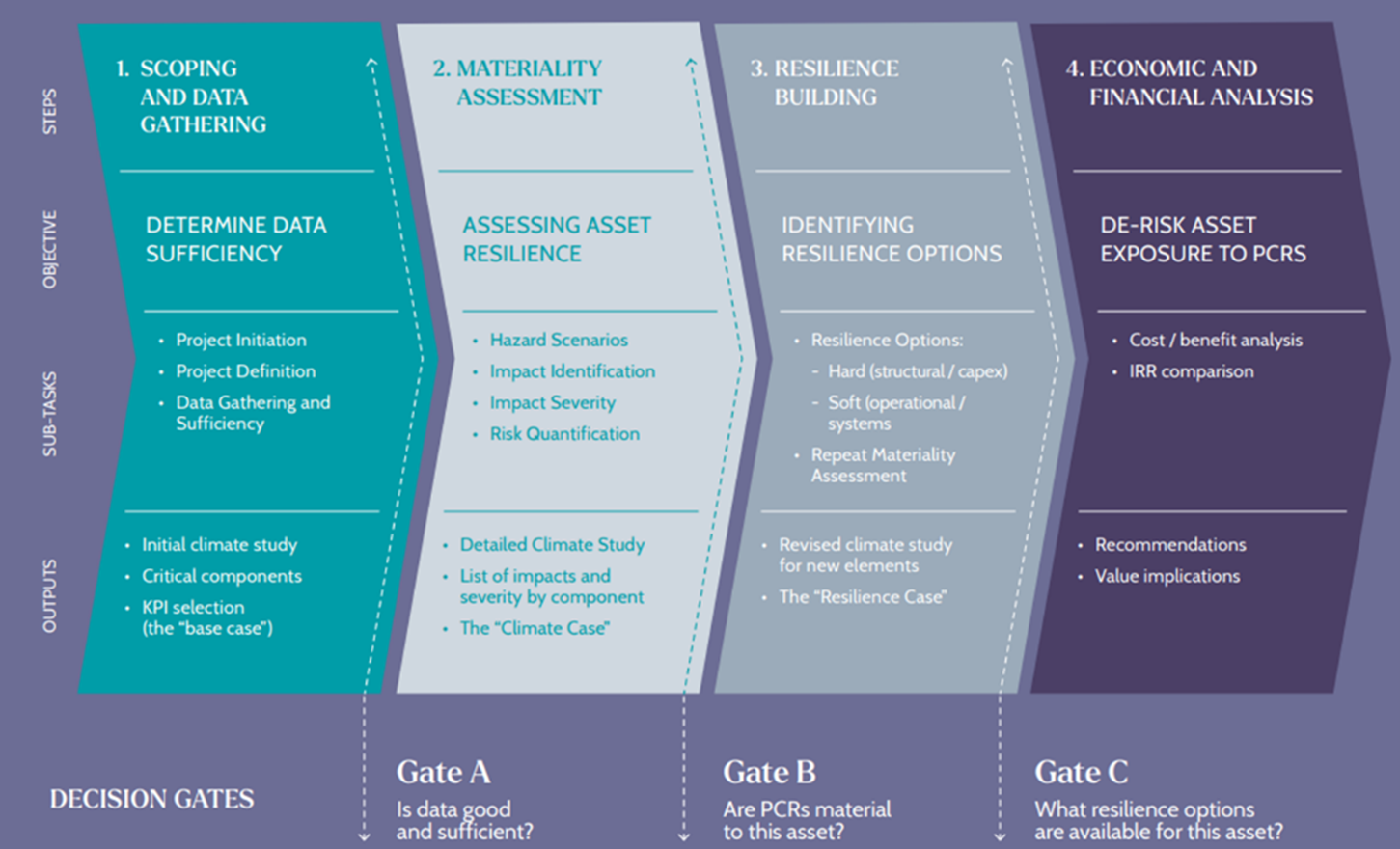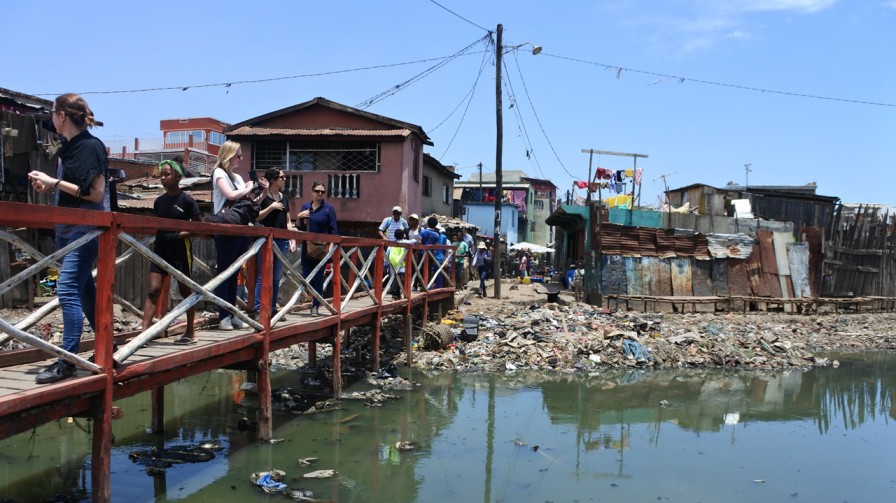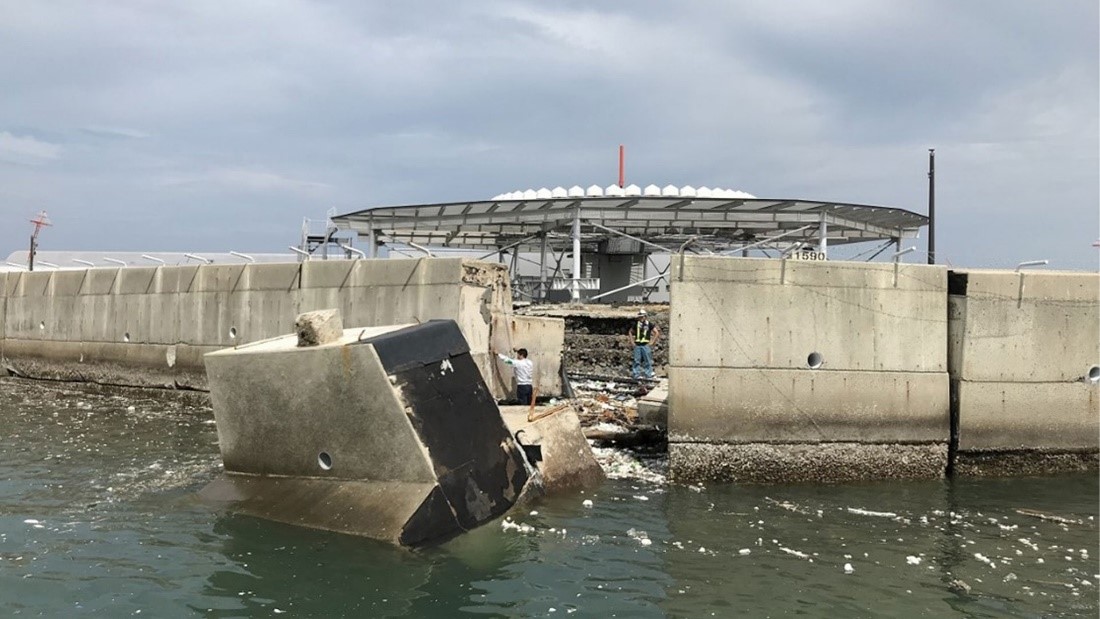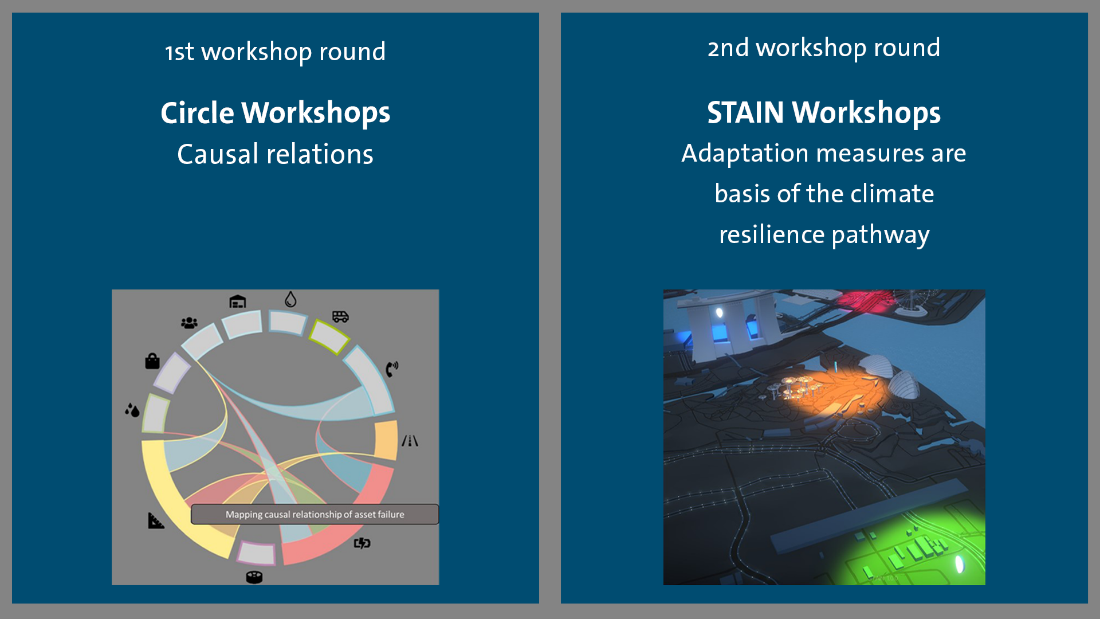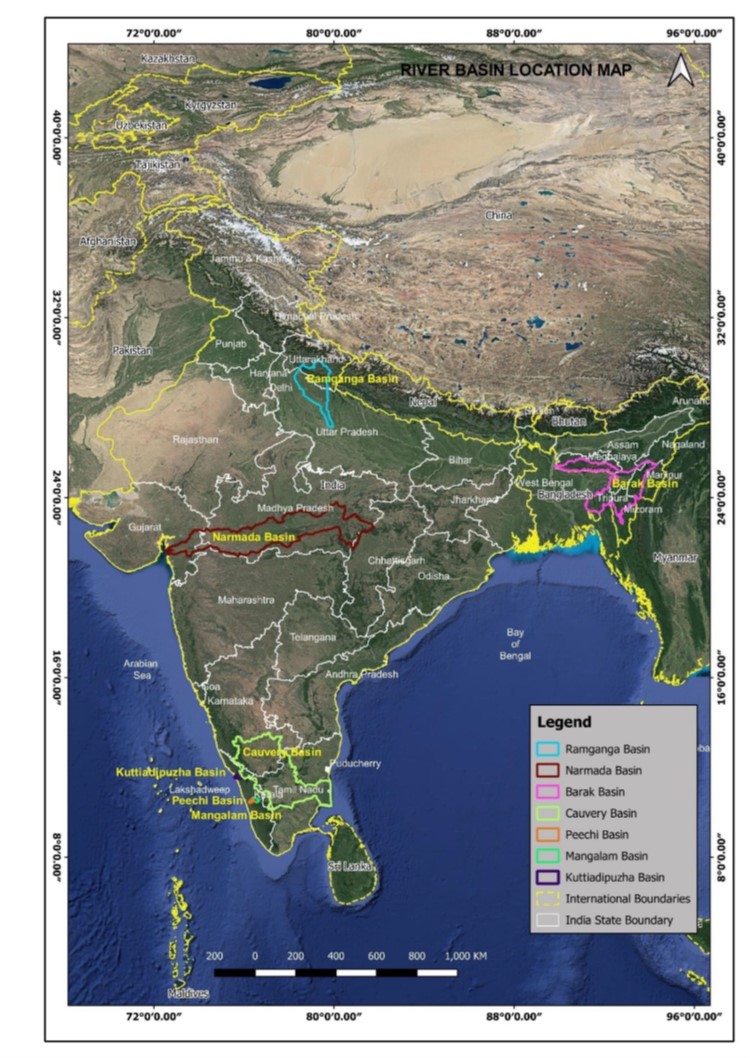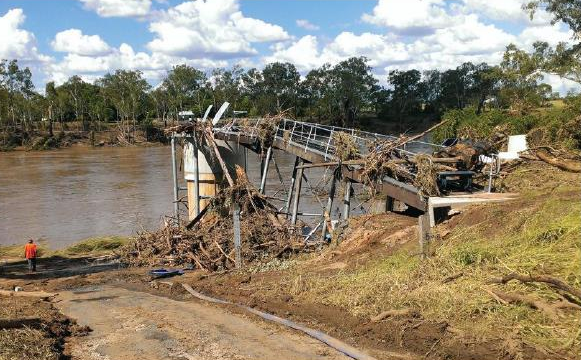 |
 |
 |
An Integrative Governance of Development, the Environment, and Disaster Management
Introduction
The Republic of Korea’s disaster risk governance is placing increasing emphasis on managing development, the environment, and disaster risk in an integrative way. The goals are to protect the right to development and the right to safety. Such policy direction is consistent with the sustainable development goals framework, with particular emphasis on environmental protection, and social equity.
About the Initiative
The Republic of Korea’s (ROK) institutional framework for risk assessment enables an integrative governance of development, the environment, and disaster management. Risk assessments ensure that threats to the environment and the safety of residents are eliminated before development projects are launched, playing a crucial role in the nation’s Disaster Risk Reduction (DRR) efforts. Disaster Impact Assessment (DIA), Urban Climate Change Disaster Impact Assessments (UCCDIA), High Flood-risk Zone and Vulnerability Assessment, and Special Act on the Safety Control of Establishment are designed to promoted sustainable development practices that protect the rights to development and the rights to safety at the same time.
- Disaster Impact Assessment (DIA) Consultation System
The DIA Consultation System requires project developers to incorporate DRR strategies in their land-use planning stages and appropriately utilize equipment and facilities in the implementation stages. It was introduced in 2018, to identify, ex ante, disaster risk factors associated with development projects, such as flooding, slope failure, or land subsidence and to devise hazard mitigation strategies. The ROK’s DIA Consultation System is unique in that it requires development projects to include the task of assessing disaster impacts as a separate and independent process. The DIA Consultation System supersedes the Preliminary Disaster Impact Review System that was introduced in 2005, with new and changed features including specific disaster risk factor assessment guidelines by stages of development (including administrative plans and development projects) and by size of development project. As of end-2018, 170 consultation cases were submitted to MOIS and 3,000 cases to local governments, with the number of consultations growing each year.
- Urban Climate Change Disaster Impact Assessments
The UCCDIA aims to promote disaster-preventive urban planning and mandates a disaster vulnerability analysis vis-a-vis six climate-induced hazards, namely heavy rainfall (including flooding and landslide risks), droughts, heat waves, heavy snowfall, strong winds, and sea level rise.
The Urban Climate Change Disaster Impact Assessments (UCCDIAs; introduced in 2015) serve as a scientific basis for hazard mitigation strategies in urban planning. For this purpose, the UCCDIAs include not only the conventional risk assessment elements, but also risk analysis related to urban land use and urban infrastructure. Information on past losses incurred from such natural hazards is used to identify hazards of concern.
Hazard vulnerability is assessed using analysis criteria, and after validating the results of the vulnerability analysis, a site investigation is undertaken to assign or adjust the assigned grade of vulnerability, after which the results are finalized. Hazard vulnerability is classified into four grades. For example, the areas that are most vulnerable to respective hazards are classified as Grade I areas. The term “hazard-vulnerable area” refers to areas falling under Grades I and II. As of December 2019, 158 local government authorities (out of 161 authorities required to conduct UCCDIA; 98%) have completed their assessments, indicating that the UCCDIA system is now an established risk assessment program in the ROK. The steps of UCCDIAs are as follows: (1) analysis of loss from natural hazards to date, (2) selection of natural hazards for analysis, (3) hazard vulnerability analysis based on analysis criteria, (4) validation of results, (5) site investigation and adjustment of vulnerability grade, and (6) finalization of results.
- High Flood-risk Zone and Vulnerability Assessment (HFZVA)
The HFZVA, introduced in 2010, is used in setting the “Flood Prevention Standards by District” (Countermeasures against Natural Disasters Act (CNDA), Article 18) to reduce losses associated with floods in areas with chronic flooding problems or those with high flooding risks. Water-related disasters and associated losses have been on the rise around the world in recent years. In the ROK, annual rainfall tends to be concentrated in the summer months, causing overloads in water-related facilities such as dams, levees, banks, and flood control reservoirs. The HFZVA system was introduced in response to rising risks of anomalous heavy rainfall resulting in potential breach in the maximum capacities of flood prevention facilities.
Projects that are subject to analysis and assessment under the HFZVA are (a) development projects requiring ex-ante Disaster Impact Assessment (DIA) Consultations; (b) renovation projects in high flood-risk districts; (c) disaster risk reduction projects; and (d) disaster recovery projects. Assessments conducted for the HFZVAs include the identification of potential flood risk areas, vulnerability analysis by district, analysis of historical flood damage and flood occurrence, review of current flood prevention facilities and vulnerabilities, and the flood mitigation capacities of adjacent areas. Based on such comprehensive assessment of flood risks and vulnerabilities, areas with flood risks are assigned one of three risk levels: high, medium, and low.
- Special Act on the Safety Control of Establishments
The Special Act on the Safety Control of Establishments (SASCE; 1995) and the succeeding Special Act on the Safety Control and Maintenance of Establishments (SASCME; 2018) were enacted amid heightened public concerns following major accidents such as the collapse of the Seongsu Bridge (1994) and the Sampoong Department Store (1995), and the more recent collapse of the Mauna Ocean Resort (2014) and the Pangyo Techno Valley ventilation grates (2014). The SASCME systematically lays out the tasks related to safety inspections and maintenance, places the duty and responsibility of maintenance on the managers of facilities, and promotes specialized safety inspections and detailed safety diagnoses based on the establishment of trustworthy inspection organizations. The achievements of enactment are (a) no safety accidents involving Class 1 and Class 2 facilities have occurred since 1995. (b) Organizations specializing in detailed safety inspections have advanced their expertise and technologies, and the size of the safety diagnosis market has grown. (c) The ROK now has a stronger and more systematic safety management scheme for major facilities that includes measures such as ordering emergency restriction on use, demolition, or evacuation when irreparable and serious structural problems are found, or mandating repairs and reinforcement.
Learning & Impact
The various risk assessment protocols in ROK help make an organic linkage of risk assessment with decision-making – mitigation investment is established and implement via integrating goals of development, environment protection and disaster management. It enhances, as a result, the resilience of infrastructure and local communities.
